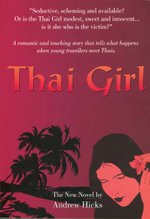


Tucked away in a drawer, I have several wood engravings taken from various issues of The Illustrated London News of 1857. These chronicle a naval engagement in Hong Kong waters between ships of the British navy which destroyed a fleet of Chinese junks with arrogant ease. The story shows how once proud sailing junks were obsolete technology and had become totally out-classed by the maneuverability and fire power of a modern steam-fired iron warship.
The junks were blown out of the water, China was humiliated in the ‘Opium Wars’ and soon was forced to sign the so-called ‘unequal treaties’ with England. These ceded Hong Kong and Kowloon as British colonies in perpetuity and granted a ninety nine year lease on the ‘New Territories’ that famously expired in 1997. Thus ten years ago, Hong Kong was ceremoniously handed back to China and an extraordinary chapter in world history came to an end.
The issue of The Illustrated London News of 9 May 1857, under the headline, ‘The War in China – Destruction of Piratical Junks’, recounts how on 16 February the English ships at Toong-Choong ‘fell in with four heavily armed mandarin boats… The Eaglet and boats from the Auckland went in and destroyed the junks. A battery on the shore mounting sixteen guns was captured and the guns spiked.’
To me these pictures are especially fascinating for a number of reasons, both personal and otherwise. I well remember Tung-Chung as one of my favourite places on Lantau, the biggest of Hong Kong’s many offshore islands. We’d take the ferry to Silvermine Bay, then wait for the tiny bus and bump our way along the twisty road, finally turning right and up the steep hill, over the mountain pass by Po Lin monastery and then begin the slow, windy descent down to the tiny fishing village of Tung-Chung.
There we’d wander round the fishing harbour, have lunch in one of the local village eateries and then visit the very same Ching dynasty fort that’s mentioned in the account of 1857. It was an atmospheric place, the solid stone walls strangel resembling the Great Wall in miniature, and from its top we could look out and for the very last time see a once commonplace but now remarkable sight.
Hong Kong was already the high-rise futuristic city that it now is, yet here before our eyes there was a farmer in conical straw hat ploughing his rice fields with buffaloes and a wooden plough. This was a unique throwback and one I shall never forget.
For some stiff exercise, we’d sometimes walk back up the mountain path to Po Lin monastery for a vegetarian lunch in the refectory, relaxed and happy and feeling a million miles from the pressures of Central district and Kowloon, the most heavily populated places in the world. Looking back as we walked, the whole of the bay was spread before us and beyond it the New Territories and China itself. This peaceful view has totally changed as the bay no longer exists.
At that time, Tung Chung was perhaps the most hidden and secret place in the whole of Hong Kong, though now it must be among the most visited. The reason is that this is the site of Shek Lap Kok, Hong Kong’s new airport.
If you look at one of my pictures, you’ll see the English gunboat steaming into the bay to confront the junks lying at anchor. On the left below the ridge of the mountains is the dark spine of a low island and that island is, at least was, Shek Lap Kok.
The runways of the airport now straddle the bay and the island itself was used as spoil for the necessary land reclamation. All that now remains of the island is its name. All that remains to tell of the naval engagement that happened there in 1857 is my wood engravings from The Illustrated London News.
At the time the airport was under construction, no mention was made that this was the site of a minor incident of colonial gunboat diplomacy in which China was trampled under foot. Perhaps the remains of the junks still lie deep beneath the runways and memories too have necessarily been suppressed.
Development of the airport was starting just as the handover of Hong Kong to China was being negotiated. As one of the world’s biggest civil engineering projects of all time, perhaps the biggest, so it was both a potential bonanza for the contractors and a financial burden for the new governors of Hong Kong. Assuring its success for all concerned was a major item on the negotiating table and the incident more than a century before perhaps an uncomfortable truth that was better not mentioned.
Now that things are no longer so sensitive following the smooth transfer of power and the success of the new airport, the truth and the engravings can finally come out of my drawer. They’ve been hidden from the world for long enough.
I’m very fond of them and had planned to keep them but perhaps I should be persuaded to part with them after all. I’ve just had to dip into my pension to build our new wooden house, not to mention buying the fish pond and setting up a frog farm, so are there any serious collectors out there?





No comments:
Post a Comment